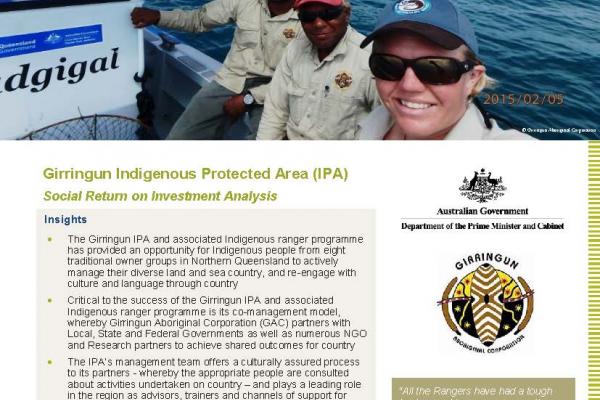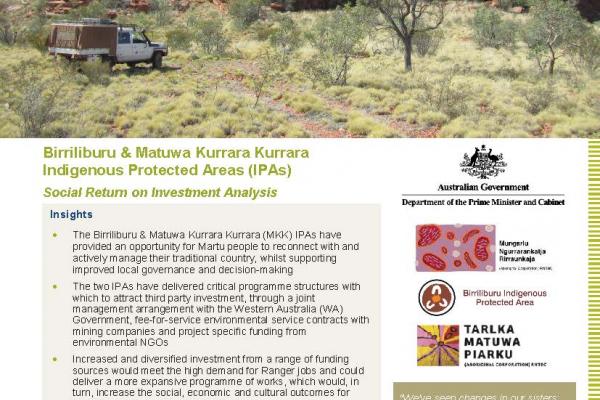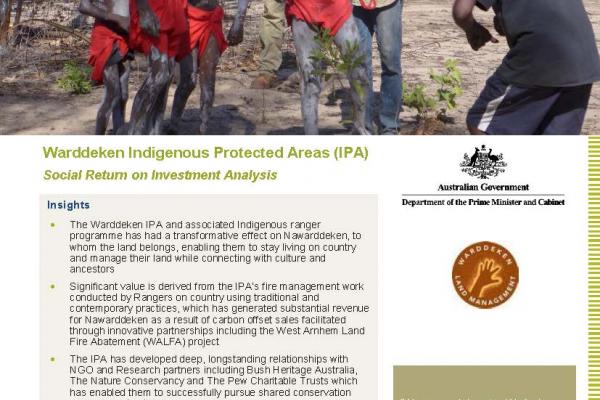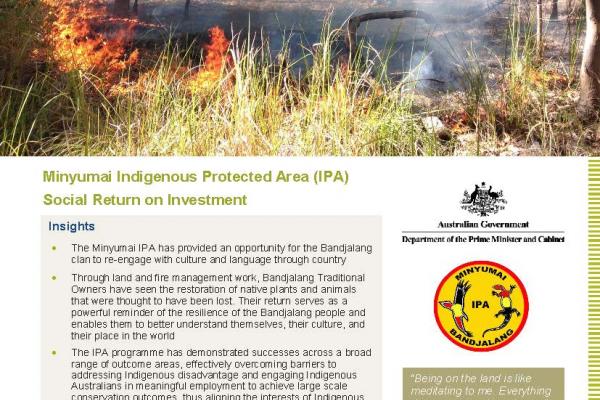Indigenous Protected Areas (IPAs) are areas of land and sea Country managed by First Nations people in accordance with Traditional Owners’ objectives, using the protected area categories outlined by the International Union for Conservation of Nature (IUCN).
The IPA Program has been supporting First Nations communities to voluntarily dedicate and manage their land as protected areas since 1997, delivering cultural heritage management and biodiversity conservation outcomes for the benefit of all Australians.
In addition to the direct employment outcomes, the IPA Program directly addresses Closing the Gap priorities by supporting empowerment of First Nations people to plan for the future, maintain unique cultural connections to land and sea and leverage broader socio-economic benefits for communities.
IPAs provide a framework for First Nations communities to combine traditional ecological knowledge with contemporary management tools to manage their land and sea Country, leverage partnerships with conservation and commercial organisations and provide employment, education and training opportunities for First Nations people.
Some terrestrial areas of IPAs are recognised as part of Australia’s National Reserve System, with most IPAs dedicated as IUCN Categories 5 and 6, which promote a balance between conservation and other sustainable uses to deliver social, cultural and economic benefits for Indigenous communities.
dedicated IPAs managed by First Nations people
million hectares of land covered by the IPAs
million hectares of sea covered by the IPAs
The IPA Program is managed collaboratively by the National Indigenous Australians Agency (NIAA) and the Department of Climate Change, Energy, the Environment and Water (DCCEEW). The Australian Government’s Indigenous Rangers Program (IRP) and IPA programs are delivered in synergy, with approximately 85% of Australia’s dedicated IPAs having management plans implemented with the support from additional rangers funded through the IRP.
Details of projects supported by the Australian Government through the IRP and IPA Programs can be viewed at via the Interactive map.
The IPA Program has a two-phase approach to the development of IPAs:
- Consultation: Traditional Owners are supported to engage with community and all relevant stakeholders to discuss the IPA proposal and to develop a Plan of Management.
- Dedicated IPA: The Plan of Management is endorsed by the Australian Government and Traditional Owners dedicate the IPA. Following dedication by Traditional Owners, the IPA Program provides funding for the employment of people to deliver the on-ground/water management activities that are outlined in the Plan of Management.
IPAs are supported by the Australian Government through multi-year funding agreements. Many Indigenous organisations also supplement this funding through commercial activities, support from private sector and philanthropic organisations. Some examples of IPA projects can be found at Stories from Country 2022.
Indigenous Protected Areas locations
- Indigenous Protected Areas National Map - PDF 8MB.
- Twelve new IPA consultation projects were funded in 2023-24, read more about these recent Indigenous Protected Areas Program grants.
Sea Country Indigenous Protected Areas Initiative
While some IPAs have been dedicated over sea Country, the Sea Country IPA Program specifically targets expansion of the IPA network to include coastal and marine areas. This initiative aims to strengthen the conservation and protection of Australia’s unique coastal and marine ecosystems, while creating employment and economic opportunities for Indigenous Australians.
The Sea Country IPA Initiative differs from previous IPA grants by including funding for the employment of First Nations people to deliver coastal and marine management activities during the IPA consultation period. In May 2022, the Australian Government announced funding for 10 Sea Country IPA consultation projects, providing employment for 40 full-time equivalent positions. Further details of each Sea Country IPA project can be found at Sea Country Indigenous Protected Areas Program.
Next phase of the Indigenous Protected Areas Program
The NIAA and DCCEEW will continue to jointly administer the next phase of the program.
The Australian Government is investing $231.5 million in the IPA Program from 1 July 2023 to June 2028. This delivers on the Government’s commitment to expand investment in IPAs by $10 million per year.
The $250 million Australian Bushland Program was announced as part of the 2025-26 Budget. The program will support activities that align with the priorities, principles and pathways set out in the National 30 by 30 Roadmap to make a significant contribution to the 30 by 30 land target. This includes expanding Indigenous Protected Areas.
Milestones
- The IPA Program was established by the Australian Government in 1997.
- In 2021, the Australian Government announced a complementary Sea Country IPA Program as part of the Oceans Leadership Package.
- In 2022, the Australian Government announced $231.5 million of additional funding for the next phase of the IPA Program from 1 July 2023 to June 2028.
- More than 750 Aboriginal and Torres Strait Islander people were employed in full-time, part-time and casual jobs under the IPA Program in 2021-22, including approximately 360 women.
- On 3 September 2023, the Nantawarrina IPA in South Australia’s Flinders Rangers celebrated its 25th anniversary, being the first IPA dedicated by Traditional Owners in 1998.
Evaluation of the IPA Program
The NIAA engaged the services of Ninti One Limited, who partnered with Commonwealth Scientific and Industrial Research Organisation (CSIRO) and James Cook University to design and carry out an independent evaluation of the IPA Program.
The evaluation assessed the extent to which program objectives and associated environmental, cultural, social and economic outcomes are being achieved.
The evaluation was conducted in two phases:
- In Phase 1, Ninti One carried out a desktop review of existing information to guide the collection of new data during Phase 2.
- In Phase 2, Ninti One collected new data including direct engagement with IPA managers through site visits to 10 IPAs.
Ninti One analysed data from Phase 1 and Phase 2 to produce an evaluation report.
A Final Evaluation Report is now available, as well as a Community Report which presents a brief summary of the Final Evaluation Report.
The NIAA would like to thank IPA provider organisations for taking time to engage with the evaluation process.



